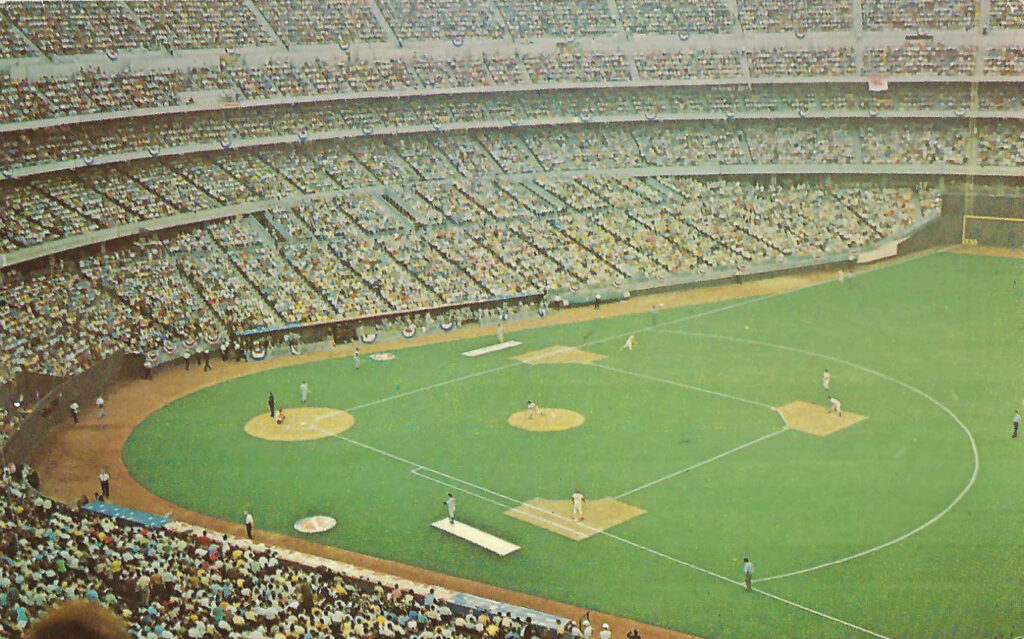
Michael Bushnell
Publisher
One of the “cookie-cutter” stadiums built in the late 1960’s and early 1970’s, Cincinnati’s Riverfront Stadium was completed in 1970 and was so similar to other stadiums such as Busch in St. Louis, Three Rivers in Pittsburgh or Fulton County stadium in Atlanta that broadcasters often mixed it up with other locations. Interestingly, it was built on the site of film legend Roy Rogers home. Rogers often joked that he was born somewhere between second base and center field in Riverfront.
The Cincinnati Reds moved into Riverfront midway through the 1970 season after spending the previous 57 years at Crosley Field, which we profiled here previously during our Negro League Baseball Leagues postcards. The Reds won only three pennants in Crosley (1939, 1940 and 1961) but won a pennant and went to the World Series in their first year at Riverfront in 1970.
Riverfront was a stadium of firsts, specifically for Hank Aaron who had the distinct honor of hitting the first home run in Riverfront on June 30th 1970. Roughly four years later, Aaron tied the all-time home run record, hitting number 714 on April 4, 1974. Longtime Cincinnati Red Pete “Charlie Hustle” Rose, on September 11, 1985, in front of a capacity crowd, including Reds Owner Marge Schott, broke Ty Cobb’s all-time hit record, swatting hit number 4,192 into left center field in a game against the San Diego Padres. Rose scored a brand new Chevy Corvette for his effort, awarded during the game by Schott. It was a Riverfront night to remember.
From 1996 until the stadium’s closure in 2002, the name was changed to Cinergy Field in a naming deal with the greater Cincinnati energy company Cinergy but the die was already in the process of being cast for a replacement stadium. Construction on the Great American Ball Park began in 2000 and opened in March of 2003, just in time for the Reds season. Riverfront Stadium was imploded on December 29, 2002 in a little less than 45 seconds. Part of the old site is occupied by the new ballpark and the Red’s Hall of Fame and Museum. The National Underground Railroad Freedom Center also shares the old site.


















